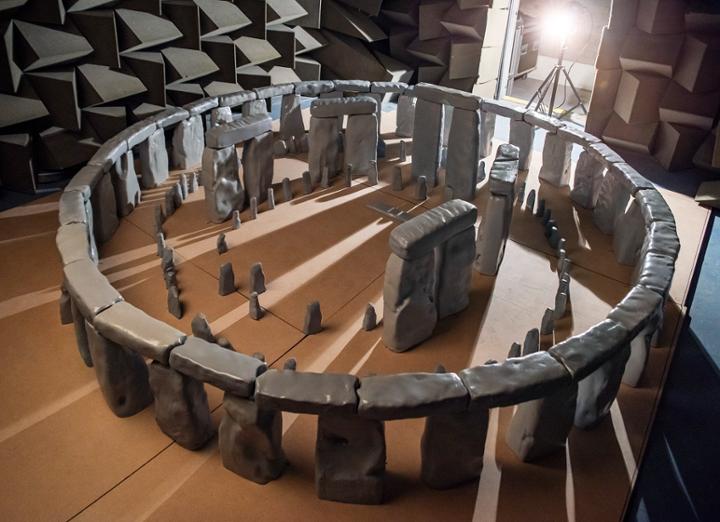What Did Stonehenge Sound Like?
US The prehistoric acoustics of an ancient site 17/12/21

|
Stonehenge is a prehistoric monument on Salisbury plain in England - and yes, the subject of a Spinal Tap song (try to not sing it while reading this). Trevor Cox, a Professor of Acoustic Engineering at the University of Salford and author of numerous books on sound and acoustics has used acoustic modeling for an article in the Journal of Archeological Science - replicating and calculating how Stonehenge may have sounded:
Abstract
With social rituals usually involving sound, an archeological understanding of a site requires the acoustics to be assessed. This paper demonstrates how this can be done with acoustic scale models. Scale modelling is an established method in architectural acoustics, but it has not previously been applied to prehistoric monuments. The Stonehenge model described here allows the acoustics in the Late Neolithic and early Bronze Age to be quantified and the effects on musical sounds and speech to be inferred. It was found that the stone reflections create an average mid-frequency reverberation time of (0.64 ± 0.03) seconds and an amplification of (4.3 ± 0.9) dB for speech.
The model has a more accurate representation of the prehistoric geometry, giving a reverberation time that is significantly greater than that measured in the current ruin and a full-size concrete replica at Maryhill, USA. The amplification could have aided speech communication and the reverberation improved musical sounds. How Stonehenge was used is much debated, but these results show that sounds were improved within the circle compared to outside. Stonehenge had different configurations, especially in terms of the positions of the bluestones. However, this made inaudible changes to the acoustics, suggesting sound is unlikely to be the underlying motivation for the various arrangements.
It's an extensive look at the probable reflections, reverberations and overall acoustics within the space. There is no mention of any banshees, but it is believed that if they lived here, they did live well.
If you want to know more, you can read the full article here: https://www.sciencedirect.com/science/article/pii/S0305440320301394
About the author [midierror]: midierror makes nifty Max For Live devices, innovative music hardware, award winning sample packs and hosts a podcast speaking to people in the music world.
< More News: Like This
- The History of Drum Machines 26-Apr-24
- Neutone Morpho V1 Released 26-Apr-24
- The MiniMoog Book Gets Funded 25-Apr-24
- Avid's Sibelius & Bad Interface Design 25-Apr-24
- Why Do Bells Sound Out of Tune? 25-Apr-24
Even more news...
Want Our Newsletter?
More...
The Avila Brothers talk about their journey to the recent Super Bowl Halftime Show
Revisions that turned synths into brand new machines






